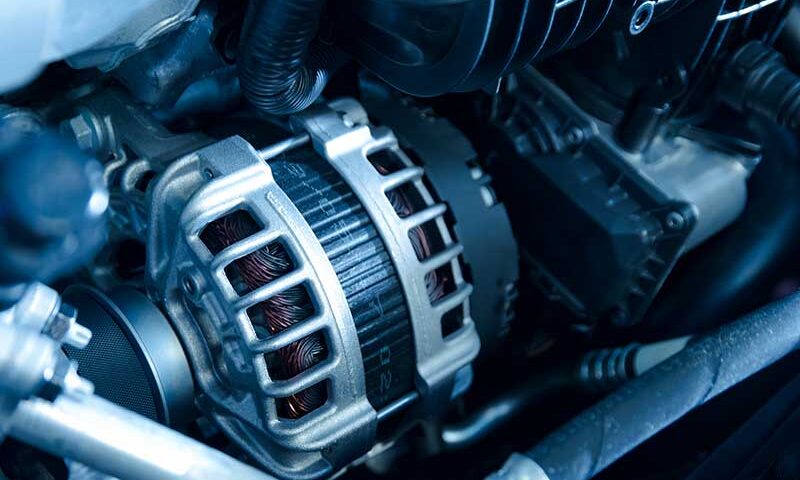Troubleshooting Car Alternator Problems

Driving Dilemmas When Your Car’s Gear Isn’t Right
October 27, 2023
When to Change Your Engine Oil A Simple Guide
December 13, 2023Your vehicle’s alternator plays a crucial role in ensuring its seamless operation. It generates electricity to charge the battery and power the car’s numerous electrical components. Alternator failure can result in a variety of problems, including a depleted battery and engine stalling. In this blog, we will walk you through the process of diagnosing common car alternator issues and help you identify potential solutions to keep your vehicle on the road.
Identifying Frequent Symptoms
The first step in diagnosing any automobile issue is to identify the symptoms. Here are a few typical indications that your alternator may be failing:
1.Dimming exterior or interior lighting
2.There are dashboard warning indicators (such as the battery and ALT lights).
3.A pungent odor, typically induced by overheating
4.Unusual sounds, such as a grinding or moaning, were heard.
5.Problems starting your car
6.Frequent battery problems necessitating frequent jump starts or replacements.
Examine the Drive Belt
The drive belt, also known as the serpentine belt, connects, among other engine components, the crankshaft to the alternator. A damaged or unsecured drive belt can cause alternator issues. Examine the belt for wear, fractures, and looseness. If you observe any problems, it is essential to replace or adjust the belt as required.
Examine the Battery
Sometimes, a weak or dying battery can simulate alternator problems. Before presuming it’s the alternator, test the battery. If the battery is the problem, replacing it may resolve the issue. If the battery is in fine condition, however, you should then test the alternator.
Test of Voltage Output
Using a multimeter, you can evaluate the voltage output of your alternator to determine its performance. This is how:
a. Start the engine and allow it to idle.
b. Configure your multimeter for DC voltage.
c. Connect the positive (red) probe of the multimeter to the positive terminal of the battery.
d. Connect the negative (black) probe of the multimeter to the negative terminal of the battery.
e. Read the multimeter’s voltage output. It ought to be between 13.5 and 14.5 volts. Anything significantly lower may signify a problem with the alternator.
Examine the Cabling and Connections
Sometimes, inadequate electrical connections or wiring damage can lead to alternator issues. Carefully inspect the alternator-connected wiring harness for signs of fraying, corrosion, or loose connections. Ensure that all wires are affixed securely.
Substituting the Alternator
If you’ve eliminated all other potential causes and determined that the alternator is the issue, it’s time to replace it. Alternator replacement is a task best left to professionals, as it requires the removal of multiple components to gain access to the alternator. A qualified mechanic can ensure proper installation and assist you in selecting the appropriate alternator replacement for your vehicle.
The conclusion
Identifying and resolving alternator issues can prevent failures and costly repairs. By recognizing common symptoms, inspecting the drive belt, testing the battery, conducting a voltage output test, examining the wiring and connections, and seeking professional assistance when necessary, you can maintain the electrical system of your automobile. Keep in mind that regular maintenance and timely repairs are necessary to ensure that your alternator continues to function properly and that your vehicle continues to operate efficiently on the road.


